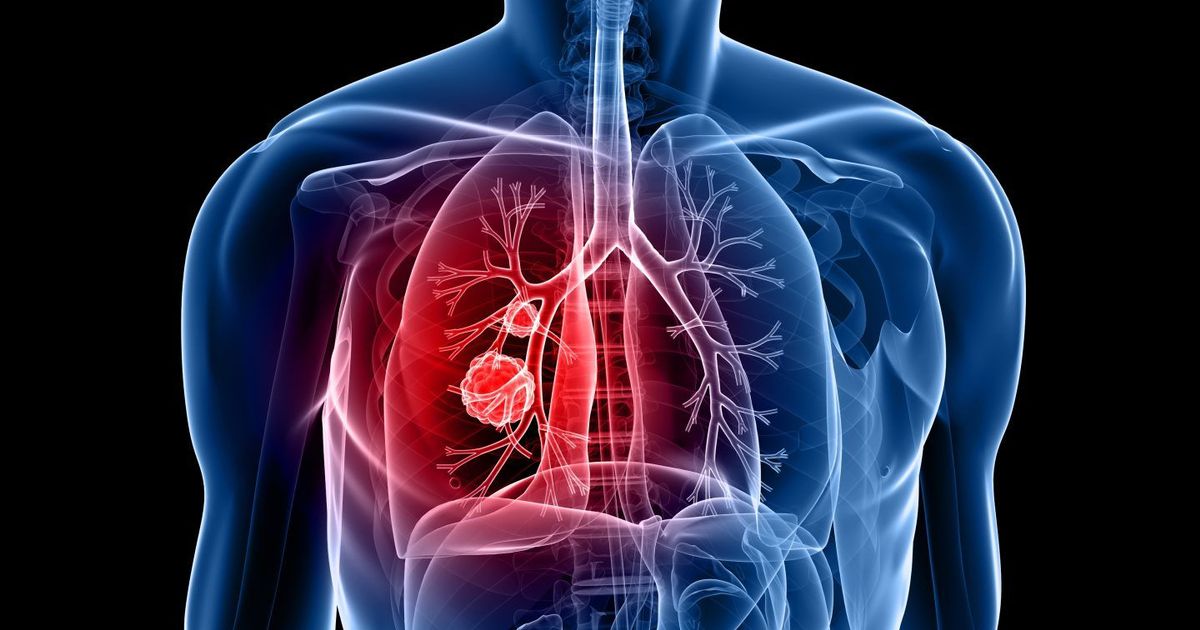Serious Symptoms Of Cystic Fibrosis
Cystic fibrosis is a genetic disease that currently affects about thirty thousand individuals in the United States alone. It is a progressive disease that creates an accumulation of mucus in the lungs and other vital organs, making it difficult for the patient to breathe. As the disease progresses, it causes lung damage, respiratory damage and inhibits the absorption of nutrients. In the past, a cystic fibrosis diagnosis in childhood typically meant an individual would not live past five years old. While there is currently no cure for cystic fibrosis, improvements in medical treatment have increased the lifespan prognosis for those diagnosed with cystic fibrosis to an average age of forty years old.
Reveal the symptoms of cystic fibrosis now.
A Persistent Cough With Mucus

A persistent cough with mucus is a very common symptom of cystic fibrosis. The body typically produces thin and slippery mucus, which acts as a lubricant for the lungs, throat, and other parts of the respiratory system. Cystic fibrosis causes the body to create a thick mucus that blocks air passages, resulting in a persistent cough as the body tries to clear the blockage. As the disease progresses, the mucus builds up in the air passages, making it difficult for the body to expel the blockage with coughing. This eventually damages the lungs causing respiratory failure and death.
Keep reading to discover more symptoms of cystic fibrosis.
Chronic Lung Infections

Individuals with cystic fibrosis also suffer from chronic lung infections. Instead of being expelled from the body through normal respiratory functions, bacteria is trapped by the accumulation of thick mucus. The bacteria then begin to attack the lung tissue, causing inflammation and increased production of mucus. Treatment for cystic fibrosis induced lung infections typically include anti-inflammatories and antibiotics, which help open the patient's breathing passages and reduces swelling while killing the invading bacteria. Chronic lung infections eventually lead to damage to the lung tissue and respiratory system failure.
Get to know the next symptom of cystic fibrosis now.
Inflamed Nasal Passages

The thick mucus produced by cystic fibrosis affects several areas of the respiratory system, including the nose. As the mucus builds up in the nose, bacteria are unable to be expelled, remaining trapped in the nasal passages. This results in sinusitis or inflamed nasal passages. The inflammation can cause patients to feel pain and pressure in the face as well as nasal congestion, difficulty breathing through the nose, pain in the upper teeth and headache. Nasal polyps can also develop in individuals who have cystic fibrosis, affecting approximately ten to fifteen percent of patients. Polyps are small, sac-like growths of inflamed nasal mucosa, which are masses in the nose, and are caused by chronic inflammation in the nasal lining.
Continue reading to uncover more warning signs of cystic fibrosis.
More Salt In Sweat

One of the first symptoms of cystic fibrosis is a distinct salty taste to the skin. Many parents recognize the taste when kissing their babies. This is due to more salt in the sweat on the surface of the skin. When the body sweats, salt is used as a catalyst to carry water to the surface of the skin to provide cooling and then be reabsorbed. When an individual has cystic fibrosis, the salt transports to the surface, but instead of being reabsorbed, remains on the surface of the skin. Because of this, individuals with cystic fibrosis are generally deficient in salt and are prone to fatigue, cramps, stomach pain, and dehydration due to this deficiency. They are at especially high risk when the weather is hot. Those with cystic fibrosis are encouraged to drink liquids that include electrolytes as a supplement for sodium intake.
Get to know more symptoms of cystic fibrosis now.
Exercise Intolerance

While physical activity is especially important for cystic fibrosis patients, as it increases lung capacity and immune function, many individuals suffer from exercise intolerance due to their symptoms. Sodium deficiency leads to chronic fatigue, muscle cramps, and overall malaise, while lung damage can make it difficult to breathe while doing even the simplest exercises. On top of that, a new study found the blood vessels in children with cystic fibrosis are impaired, and their muscles were not able to utilize oxygen as efficiently as those children without cystic fibrosis. Patients with cystic fibrosis have blood vessels that have difficulty with dilation, which increases the need for oxygen during exercise.
Read more on the serious warning signs linked to cystic fibrosis now.
Wheezing

A cystic fibrosis patient will experience frequent episodes of wheezing as a symptom manifestation of their disease. Wheezing is best described as a high-pitched, potentially rough sounding, whistling noise that occurs when breathing. Wheezing occurs when the inhaled air moves through narrowed or partially obstructed airways, similar to the way a flute or whistle produces their sound. Cystic fibrosis is a progressive disease where a gene mutation impairs the healthy production of a protein responsible for the regulation of salt movement into and out of cells. This process removes the moisture from the mucus produced in the respiratory, digestive, and reproductive systems. The mucus in someone who has cystic fibrosis is often referred to as sticky and thick, as it has a greater viscosity than normal mucus and is difficult to clear from the lungs and digestive tract. This thick mucus builds up in the airways that branch from the trachea, all the way into each lung to the alveoli or small air sacs that function to facilitate gas exchange. The mucus in these airways decreases the amount of space that air has to pass through, producing a wheezing sound. Wheezing occurs most often in infants under a year old who have cystic fibrosis when the abnormal mucus initially begins to accumulate.
Continue reading for more details on how to spot cystic fibrosis now.
Poor Weight Gain

Poor weight gain is a characteristic symptom that occurs in cystic fibrosis patients. The abnormal protein that does not regulate salt movement into and out of the cells causes the mucus in the small intestine and pancreatic duct to become thick and sticky. This mucus can block the duct where essential digestive enzymes enter the small intestine so they can perform their critical functions in digestion. When these enzymes do not make it to the small intestine, they cannot perform the vital function of absorbing important nutrients the body requires for all of its organ systems to function correctly. This malfunction means the affected individual has malabsorption of fats, proteins, and less commonly, carbohydrates. The inability to absorb fats results in deficiencies of fat-soluble vitamins, including vitamins A, D, E, and K. These nutrient deficiencies and poor calorie absorption both result in poor weight gain as the individual grows. Between ninety and ninety-five percent of individuals diagnosed with cystic fibrosis experience failure to thrive with digestive symptoms and pancreatic enzyme deficiency early on in their life. Older children and adults affected by cystic fibrosis may present with anorexia.
Discover additional symptoms of cystic fibrosis now.
Severe Constipation

Some individuals who have cystic fibrosis may present with severe constipation as a manifestation of their disease. This symptom occurs most commonly in cystic fibrosis patients in their late childhood or early adulthood. The thick sticky mucus produced in these individuals can clog up the ducts that deliver digestive enzymes to the small intestine. Without these digestive enzymes, the affected individual experiences malabsorption of proteins, fats, and sometimes, carbohydrates. When these components stay in the digested food as it moves through the intestines, it often gets stuck and moves too slowly. This malfunction results in the large intestine absorbing too much fluid out of the digested food, causing the patient's stools to become abnormally hard and difficult to pass from the body. Individuals affected by this symptom may strain to the point of rectal prolapse or a painful condition where part of the rectum protrudes out of the anus. Another presentation of severe constipation is through the complication of distal intestinal obstruction or a partial or complete blockage in the area where the small intestine meets the large intestine.
Uncover information on more cystic fibrosis warning signs now.
Frequent Shortness Of Breath

Individuals affected by cystic fibrosis can experience frequent shortness of breath as a symptom of their disease. Healthy individuals produce mucus with thin and slippery properties, and it serves as a lubricant for the respiratory and digestive tracts. When a patient's body produces thick and sticky mucus, these secretions can plug up numerous tubes in the digestive system, ducts, and lung passageways. The reduced amount of space air has to pass into the alveoli can cause the individual to feel like they cannot breathe in enough air. In addition, cystic fibrosis increases the occurrence of pneumothorax or a condition where air accumulates in the space that separates the chest wall from the lungs. This malfunction places pressure on the exterior of the lungs causing the passageways to become even more narrowed, resulting in severe chest pain and shortness of breath. An inflammatory component called neutrophil elastase can cause elastin degradation and the production of IL-8 in epithelial cells. Therefore, it acts as a secretagogue and contributes to impaired gas exchange, structural damage, and end-stage lung disease. Cystic fibrosis causes the airway walls to become thinner over time and can cause severe damage to the lungs, impairing their function. A combination of one or more of these factors can cause frequent episodes of breathlessness.
Learn more about the major symptoms of cystic fibrosis now.
Frequent Pneumonia

Frequent pneumonia infections can be indicative of cystic fibrosis. This symptom is most prevalent in older children and adults affected by cystic fibrosis. The thick and sticky mucus can easily accumulate and clog up the tubes within the lungs of cystic fibrosis patients. This thick mucus also commonly clogs up the openings to the sinuses, the small air pockets behind the cheekbones, nose, eyes, and forehead. Both types of blockages create a hospitable environment and breeding ground for pathogens such as bacteria and fungi. In the immune system of cystic fibrosis patients, complement receptors including CR1, C3bi, and IgG are split into simpler molecules by neutrophil elastase. This dismantling process results in the failure of a process called opsonophagocytosis, or the process of ingesting and destroying foreign pathogens and particles by phagocytes initiated by an opsonin. This malfunction results in a vicious recurrent infection and neutrophilic inflammatory cycle that results in further irritation and damage of the lung tissues. Due to this impairment, the bacteria that invade the lungs become persistent and hard to fight off, leading to repeated infections or frequent pneumonia.
